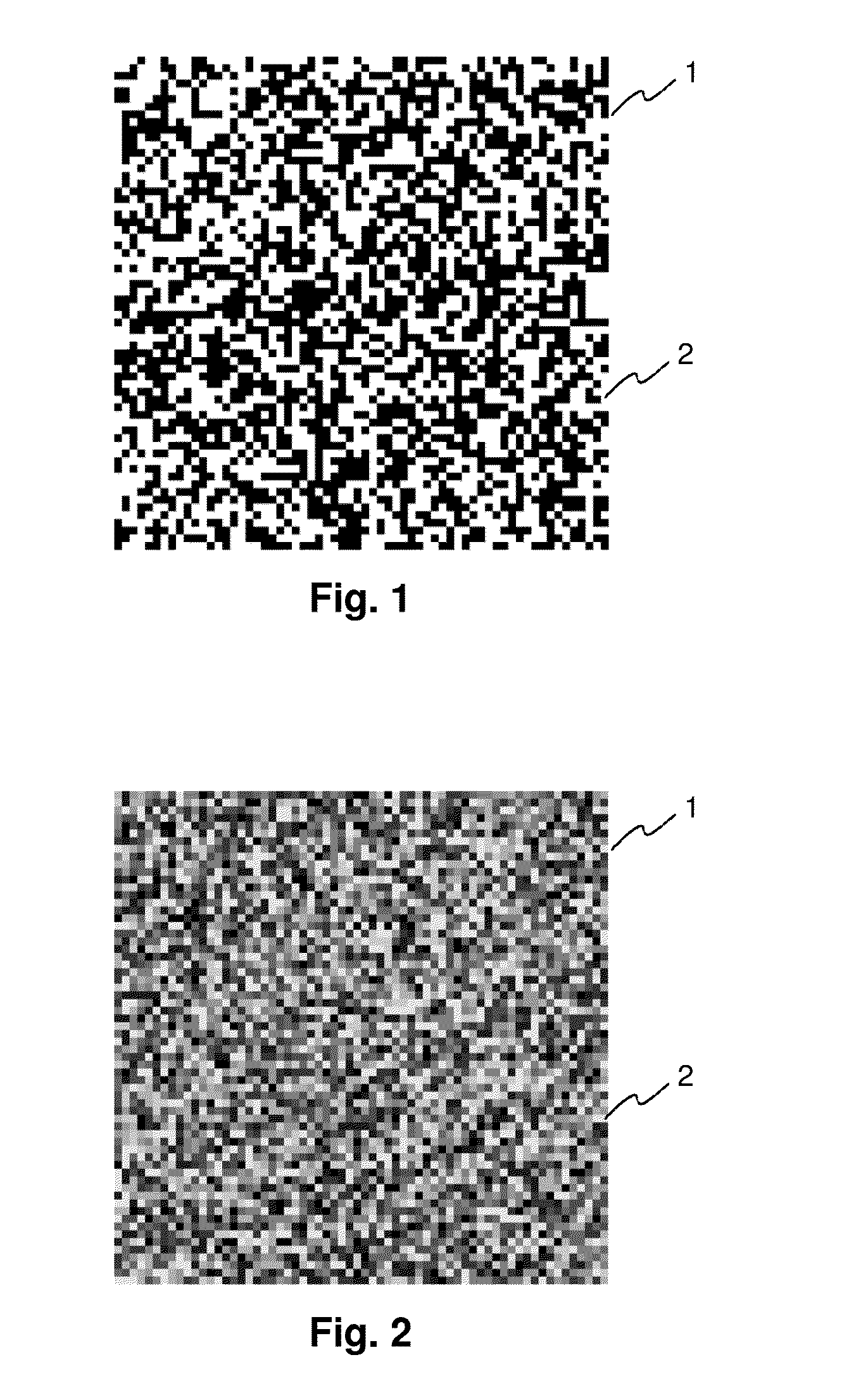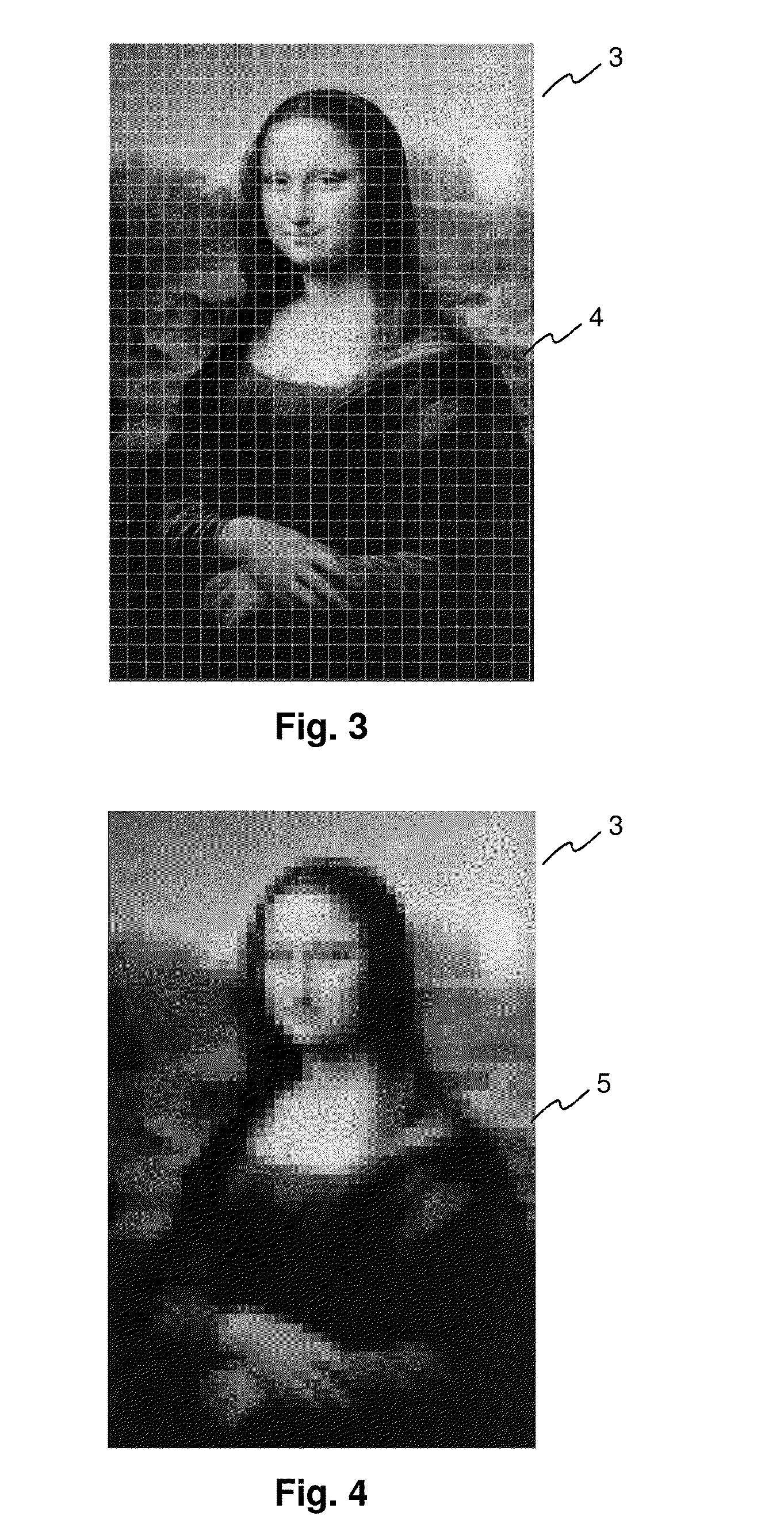Method and apparatus for storing data
a technology for storing data and patterns, applied in the direction of digital output to print units, printers, instruments, etc., can solve the problems of reducing the storage capacity of microfilm, not allowing easy determination of what is actually stored in the pattern, etc., and achieve the effect of reducing the storage capacity of photographic media and easy gain of information
- Summary
- Abstract
- Description
- Claims
- Application Information
AI Technical Summary
Benefits of technology
Problems solved by technology
Method used
Image
Examples
Embodiment Construction
[0042]The Bits-on-Film technology consists in printing tiny black-and-white, grey, or colored square pixels on a photographic medium, e.g. on a film or a microfiche. Each pixel represents stored information. Typically, blocks of pixels are printed. The blocks consist of pixels that are arranged as a regular sequence of lines, which in combination form a square or a rectangle. A block is thus printed as a checkered pattern. The stored data can be retrieved by scanning and subsequently analyzing the printed pattern.
[0043]FIG. 1 shows a block 1, i.e. a checkered pattern, printed on a common 35 mm gauge movie film using black-and-white pixels 2. In this case each pixel corresponds exactly to one bit. For instance, a white pixel may represent a logical “0”, whereas consequently a black pixel then represents a logical “1”.
[0044]FIG. 2 shows a block 1, i.e. a checkered pattern, printed on a common 35 mm gauge movie film using pixels 2 with differentiable grey values. In this case each grey...
PUM
 Login to View More
Login to View More Abstract
Description
Claims
Application Information
 Login to View More
Login to View More - R&D
- Intellectual Property
- Life Sciences
- Materials
- Tech Scout
- Unparalleled Data Quality
- Higher Quality Content
- 60% Fewer Hallucinations
Browse by: Latest US Patents, China's latest patents, Technical Efficacy Thesaurus, Application Domain, Technology Topic, Popular Technical Reports.
© 2025 PatSnap. All rights reserved.Legal|Privacy policy|Modern Slavery Act Transparency Statement|Sitemap|About US| Contact US: help@patsnap.com



